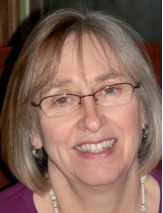The Pacific Northwest, Part 2 - Volcanoes
We were at the Japanese Garden in Portland, Oregon one sunny day. When I saw this view from a pavilion, it reminded me of photos I have seen of Mt. Fuji in Japan. This is looking east, and shows the top of Mt. Hood poking above the clouds and the tall buildings of the city. The sun was shining from behind and the second row of young trees were backlit. To me, this was a bonus, as it added to the drama and beauty of the scene.
Mt Hood is approximately 11,200 feet high (3,429 meters). Mt. Fuji is slightly taller. They were both last active in the 1700s.
We decided to spend a better part of one day viewing the new shape and environs of Mt. St. Helens in Washington state. The volcano blew its top in May of 1980, so it is not a recent event. But since we live 3,000 miles away on the East Coast, we hadn’t seen the mountain in its new formation. We had hiked to the top of this mountain in 1969 when we were attending graduate school in Washington, so this was a special visit for us.
I put in a dotted line over the mountain to show how it was in its conical shape until the eruption. It was one of the most perfectly symmetrical, conical shaped mountains we have ever seen. It’s still active; there have been lava flows in the intervening years, and I saw a plume of steam rising from the interior cone while we were driving toward the mountain.
This view is from a high spot, looking down over a parking lot, a road, and the newly formed (1980) river valley. The river looked like a silver ribbon with the sun shining off it.
It is the time of year to see and hear elk in the valley. We didn’t see any, but we heard them.
Scientists are recording the renewal of the plants and animals of the area. Most animals who lived underground survived, and lupines with their tough-skinned seeds and nitrogen-fixing ability led the return of plants to the area. In my drawing I tried to show new fir trees sprouting up, and the yellow and reddish ground cover that has regrown. It is hard to show scale, but there is some green regrowth also in the vertical gullies.
We are on a trail that leads to Spirit Lake. Spirit Lake is larger than it was before the eruption and 200 feet higher in altitude. I drew the handrail on the left It was after 3 PM, so we didn’t follow the trail much further than this.
Another volcano, Mt. Adams, can be seen at the far right. It was last active 1,400 years ago, but is not considered extinct. It is 12,281 feet or 3,743 meters.
And finally, the beautiful peak of Mt. Rainier, 54 miles (87 km) southeast of Seattle. I drew this from a rest area along Route 5. We are looking east, but the colors of sunset are reflected in the snowy glaciers of the mountain. And the lower sky was greenish. Mt. Rainier is considered to be one of the most dangerous volcanoes on earth. I think this is because of the likelihood of eruption and the nearness of population centers.
Mt. Rainier has 26 glaciers and a double coned peak. And nearly 2 miles (3.2 k) of ice caves formed by geothermal heat.








